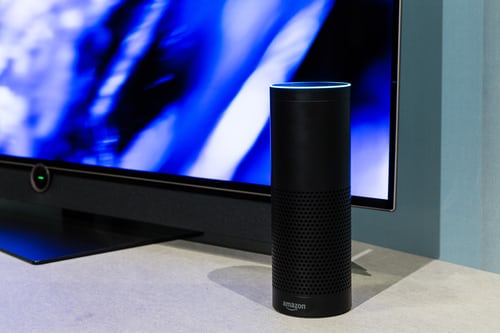Alexa is a virtual assistant, which works with an echo dot in order to fulfill all the demands of its users. With its thousands of attractive features, Alexa has made the life of its users super easy and also entertaining at the same time.
With its hi-tech features, Alexa can do almost everything from controlling smart home lights to set reminders, playing songs, jokes, news, quizzes, and much more things. But due to some reasons, you may find your Alexa not responding to the commands that you are giving it.
Do not worry if you are facing the Alexa not responding issue. Here we have the most effective and easiest troubleshooting steps to fix this issue.
Troubleshoot The Alexa Not Responding Issue:

So, let’s head towards the troubleshooting steps.
1. Check The Microphone Button
There are many instances when we find that the reason behind Alexa not responding is because the microphone is damaged or we forget to turn the button on. The microphone button is one of the most common reasons for this issue.
So, check the microphone button first. If the issue persists and it seems that everything is totally fine there. You can step to the next process.
2. Reboot The Device
This is one of the most effective and easiest ways in the whole troubleshooting process of Alexa is not responding issue. There is not much trouble, all you need to do is just restart the device and the issue will get resolved. But this restarting has a definite name called power drain, and it is more than just powering off the power button and power on it again.
Here is the step-by-step guide for the power drain process.
- First, you need to check the power light. In case it is showing blue light, that means the device is able to hear you but simply the Alexa device is unresponsive to your commands.
- Disconnect the power cable from the power source for at least 30 seconds.
- Wait for a little while, and after that, connect the power cord again with the power outlet.
- Now, when your device is ready completely, try to give it any command again.
- If the issue is resolved, then it is fine. But in case the issue of Alexa not responding continues, head to the next step.
3. Echo Dot Hard Reset
In case the above described troubleshoot does not work for your echo dot. Here is the step-by-step guide to hard reset.
- You will find the reset button at the bottom of the device. You can use a pin to press the button.
- As soon as you press the button, the device will power off.
- Here, you need to wait for a little and then power the device on again.
- All the settings of the device will then reset to the original.
4. Disable And Enable Alexa Privacy
If Alexa not responding after all the above-mentioned troubleshooting steps, now is the time to enable Alexa privacy and in order to do so, follow the below steps.
- You will find a button at the end of Alexa’s nucleus screen. You need to press the button.
- This button is to enable the privacy of Alexa. If you press the button again, the device will hear you again.
- Give a command to Alexa in order to check whether the issue is resolved or not.
5. Check Your WiFi Connection
Behind the “Alexa not responding” issue, there is a huge chance that maybe your wifi connection is not working properly. That is why Alexa is finding it difficult to respond to your commands.
Well, let me tell you that if you do not have a proper internet connection, there will be no use for this Alexa device. So, check the router now. In case you find anything wrong, contact your network service provider.
6. Try Changing The Position
In case you have placed your echo dot device far from your router or in someplace where it is having issues connecting with the router. This can be the main reason why you are experiencing “Alexa not responding.”
Make sure that you are placing Alexa within the wifi range. The place should be accessible to yours as well so that your echo dot device can connect with the network properly and also can hear you clearly.
7. Set Echo And Smartphone On The Same Network
Always keep in mind that the smartphone that you are using and Alexa have to be connected within the same network. In case they are connected with different routers or your phone is not connected with the router’s network, you will face the “Alexa not responding issues.” Connect both of them on the same router’s network in order to resolve the issue.
8. WiFi Congestions
If you have connected a lot of devices within the same router’s network, it may create the “Alexa not responding” issue. Due to excessive wifi congestions, your echo dot is not able to respond to your given commands. Remove or disconnect some other devices, and then try to give your device command and check if the issue is resolved.
Still Alexa Not Responding?
All the steps that I have told you in this troubleshooting guide are enough for resolving Alexa not responding to voice issue. But if you face the same problem after performing all the troubleshooting steps. You should contact Alexa customer care. Call on the Alexa helpline number and ask for help.






















